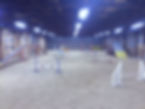A Quick Preview Of Dog Agility
Dog agility is an awesome activity to do with your dog. It reinforces the bond between the handler and his dog.
Dog agility is a course with about 20 obstacles. The dog has to accomplish all the obstacles in the sequence given by the agility judge. And don't forget! It is a race so you must lead your dog through the course and do as fast as you can! It's a lot of fun! Come and try it!
What is dog agility?
Dog agility is a dog sport in which a handler directs a dog through an obstacle course in a race for both time and accuracy. Dogs run off leash with no food or toys as incentives, and the handler can touch neither dog nor obstacles. Consequently, the handler's controls are limited to voice, movement, and various body signals, requiring exceptional training of the animal and coordination of the handler.
In its simplest form, an agility course consists of a set of standard obstacles laid out by a judge in a design of his or her own choosing in an area of a specified size. The surface may be of grass, dirt, rubber, or special matting. Depending on the type of competition, the obstacles may be marked with numbers indicating the order in which they must be completed.
Courses are complicated enough that a dog could not complete them correctly without human direction. In competition, the handler must assess the course, decide on handling strategies, and direct the dog through the course, with precision and speed equally important. Many strategies exist to compensate for the inherent difference in human and dog speeds and the strengths and weaknesses of the various dogs and handlers.
Definition borrowed from Wikipedia

Competition Basics
Because each course is different, handlers are allowed a short walk-through before the competition starts. During this time, all handlers competing in a particular class can walk or run around the course without their dogs, determining how they can best position themselves and guide their dogs to get the most accurate and rapid path around the numbered obstacles. The handler tends to run a path much different from the dog's path, so the handler can sometimes spend quite a bit of time planning for what is usually a quick run.
The walk-through is critical for success because the course's path takes various turns, even U-turns or 270° turns, can cross back on itself, can use the same obstacle more than once, can have two obstacles so close to each other that the dog and handler must be able to clearly discriminate which to take, and can be arranged so that the handler must work with obstacles between himself and the dog, called layering, or at a great distance from the dog.
Printed maps of the agility course, called course maps, are often made available to the handlers before they run, to help the handlers plan their course strategy. The course map contains icons indicating the position and orientation of all the obstacles, and numbers indicating the order in which the obstacles are to be taken. Course maps were originally drawn by hand, but nowadays courses are created using various computer programs.
Each dog and handler team gets one opportunity together to attempt to complete the course successfully. The dog begins behind a starting line and, when instructed by his handler, proceeds around the course. The handler typically runs near the dog, directing the dog with spoken commands and with body language (the position of arms, shoulders, and feet).
Because speed counts as much as accuracy, especially at higher levels of competition, this all takes place at a full-out run on the dog's part and, in places, on the handler's part as well.
Scoring of runs is based on how many faults are incurred. Penalties can include not only course faults, such as knocking down a bar in a jump, but also time faults, which are the number of seconds over the calculated standard course time, which in turn is determined based on the competition level, the complexity of the course, and other factors.
Here are some links to the most common Agility associations in Canada:
AAC - Agility Association of Canada
CKC - Canadian Kennel Club
UKI - UK Agility International
Classes We Offer

1
Introduction To Dog Agility
These classes are for dogs who have never done any agility before. The dogs learn to perform all the obstacles while following your lead. We use toys and food so the dogs have lots of fun!
2
Beginner Classes
These classes are for dogs who have completed the introduction class. We reinforce their skills on obstacles and you learn handling technics. We use toys and food so the dogs have lots of fun!
3
Advanced/Master Classes
These classes are for teams who want to improve their handling and skills. The dog most be able to perform all the obstacles so we can work on handling, independence and more.


